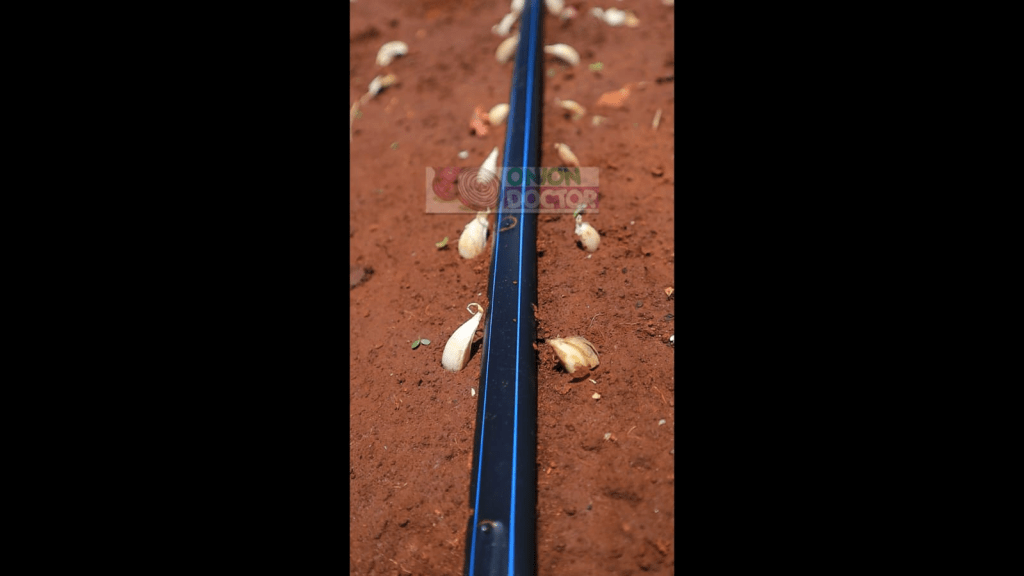Welcome to the aromatic world of garlic farming in Kenya! If you are looking to spice up your agricultural journey, garlic farming in Kenya is the perfect venture to dive into. This high-value crop known as kitunguu saumu locally, is not only a kitchen staple but also a medicinal marvel with a booming market. Garlic farming in Kenya offers farmers a chance to tap into a lucrative agribusiness, with demand soaring both locally and internationally. Whether you are a seasoned farmer or a newbie with a green thumb, garlic farming in Kenya is an exciting, profitable endeavor that is easier than you might think. Let us dive into the aromatic art of garlic farming in Kenya, guided by Onion Doctor expertise, complete with vibrant tips, quirky facts and stunning visuals to make your garlic farming in Kenya journey a success!

BENEFITS OF GARLIC FARMING IN KENYA
- Favorable Climate: Kenya’s climate is well-suited for garlic farming. The crop thrives in areas with cool temperatures and moderate rainfall, conditions that are common in many parts of Kenya.
- High Market Demand: Garlic is widely used in Kenyan cuisine, and there’s a high demand for it in local markets. This demand often exceeds the local supply, making it a profitable crop to grow.
- Export Opportunities: In addition to the local market, there’s also a demand for Kenyan garlic in international markets. This presents an opportunity for export and additional income.
- Job Creation: Garlic farming can create jobs, both in the farming process itself and in related industries like processing and marketing. This can contribute to local economic development.
- Soil Improvement: Garlic has the ability to improve soil health by increasing its organic matter content. This can benefit other crops grown in rotation with garlic.
- Low Water Requirement: Garlic doesn’t require a lot of water to grow, which is an advantage in areas where water resources are limited
FARMING PRACTICES IN GARLIC FARMING
- Land Preparation: Garlic prefers well-drained, fertile soil. Prepare the land by plowing and harrowing to make the soil fine and loose.
- Planting: Garlic is typically planted using cloves. Separate the cloves from a garlic bulb and plant them about 2 inches deep and 6 inches apart. The flat end of the clove should be facing down.
- Watering: Garlic needs regular watering, but be careful not to overwater as this can lead to rot. The soil should be kept moist, not waterlogged. Use drip irrigations from Onion Doctor for the best results
- Weed Control: Weeds can compete with garlic for nutrients, so it’s important to keep your field weed-free. This can be done manually or with the use of approved herbicides.
- Pest and Disease Management: Monitor your crop regularly for signs of pests or disease. If detected, consult with an agricultural expert for the appropriate treatment.
- Harvesting: Garlic is usually ready to harvest when the lower leaves start to yellow and dry out. This typically happens 7-8 months after planting.
- Post-Harvest Handling: After harvesting, dry the garlic in a well-ventilated area out of direct sunlight. Once dry, it can be stored in a cool, dry place until it’s ready to be sold.

CHALLENGES OF GARLIC FARMING IN KENYA
- Pests and Diseases: Garlic can be affected by various pests and diseases, such as thrips, white rot, and purple blotch.
- Climate Change: Changes in weather patterns can affect garlic production. Drought, for example, can lead to water shortages.
- Market Fluctuations: The price of garlic can fluctuate, affecting the profitability of garlic farming.
- Access to Quality Seeds: Getting quality garlic seeds can be a challenge.
- Post-Harvest Losses: Improper handling and storage of harvested garlic can lead to losses.
- Lack of Knowledge and Skills: Some farmers may lack the necessary knowledge and skills for successful garlic farming.
SOLUTIONS
- Pests and Diseases: Regular monitoring and early detection are key to managing these issues. Consult with an agricultural expert for appropriate treatments.
- Climate Change: Farmers can consider using water-efficient irrigation systems and drought-resistant garlic varieties to mitigate this.
- Market Fluctuations: Diversifying the farm with other crops can help manage this risk.
- Access to Quality Seeds: Farmers can consider joining cooperatives or farmer groups to pool resources and access quality seeds.
- Post-Harvest Losses: Training in post-harvest handling and investing in proper storage facilities can help reduce these losses.
- Lack of Knowledge and Skills: Training programs and agricultural extension services can provide valuable education and support.
Contact us for: Onion seedlings, Garlic seedlings, Germinated garlic cloves, Farm planning services, Soil testing, training on onion and garlic growing, Drip irrigation installation and maintenance, Agronomic support, Onion and Garlic value pack and Farm management. For free consultation, placing orders or booking a visit with an agronomist, please contact us via Call or what’s app +254703982228, Email: Info@oniondoctor.co.ke. You can also check out our social media handles for daily updates on TikTok: https://www.tiktok.com/@oniondoctorke?_t=ZM-8wmsTu0qumO&_r=1 Instagram: https://www.instagram.com/oniondoctorke?igsh=MTVoaHF3aWUydTJzaQ==Facebook:https://www.facebook.com/share/16SwgYn2dG/ Youtube:https://youtube.com/@oniondoctorke?si=u5Jnd-r0qU9UDYqL and Twitter: https://x.com/OnionDoctorKe?t=FR3JXlS_oN1vjjUgAtfyzg&s=09